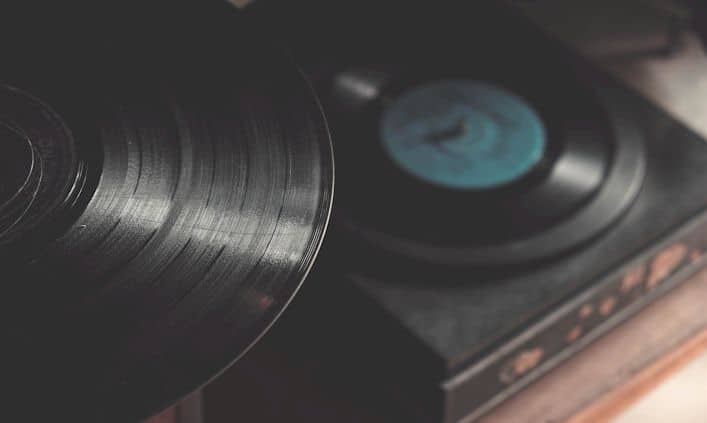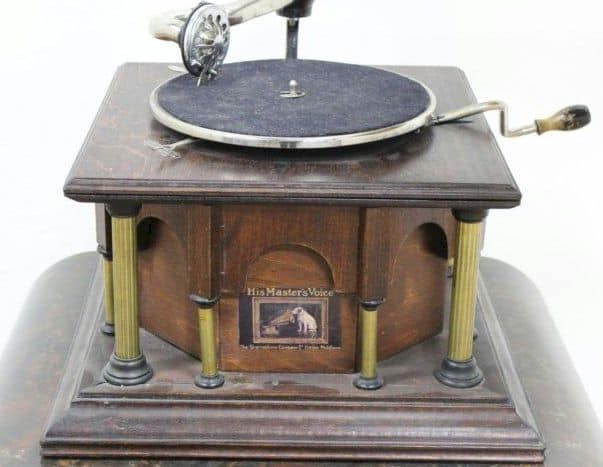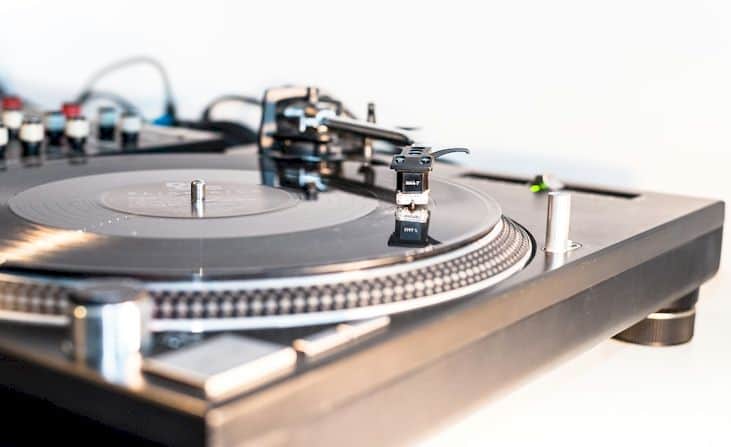Contents
A Music Aficionado’s Dilemma
Do you love the music of today? Do you rock to rock music, bop to K-pop stars, or do you long for the music of the 70s, 60s, and 50s? If you said you liked the latter, you’ve probably looked into old vinyl records from the Jackson 5, James Brown, Frank Sinatra, etc., and bought them as soon as you found them. Afterward, you’ve probably wondered about buying a player for your new record, hit up Google, and then suddenly encountered that big question:
turntable vs. record player?
Don’t worry. It’s not embarrassing to be confused, and many people search the internet for the answer too, so much so that it’s one of the top suggested searches for playing vinyl records. The good news is that once you read the information below, not only will you become a knowledgeable music aficionado, you will also know what brand of spiffy speaker you need to add to get the most juice outta your turntable.
Related: Turntable Mats and Slipmats
Distinguishing a Turntable from a Record Player
Let’s start by the fact that turntable can refer to a few things, not all of which are related to music. Turntable, as most people know, is a device that plays vinyl records. However, it can also refer to a table accessory, the Lazy Susan; or the rotating theatrical stage; or the train track turntable used in switching the direction of train; or the vehicle turntable used in car sales showrooms or in safer egress or in eliminating backing up; or as parts of commercial buses, helping preserve floor continuity during acceleration.

Now that it’s out of the way, the most fundamental difference between turntable vs. record Player can be summed up as: a turntable is in a record player already, but a record player is not a turntable.
Related: Turntable Isolation Platforms
To elaborate, a turntable is a significant part of the record player. It is made up of the circular platform called the platter on which the record is placed. When the platter spins, the turntable’s tonearm and the attached phono cartridge make contact with the record’s grooves, sending an electronic signal to the pre-amp or pre-amplifier, which is responsible for producing the sound.A turntable spins vinyl records at a steady pace, a standard usually followed by music producers not too long ago. It does not, contrary to popular belief, include amplifiers or speakers. Relatively, the turntable is smaller than other types of record players. Nowadays, the turntables are more hi-tech, and much more expensive models are even customizable, allowing peripherals like high-end speakers and mixers to be attached.To get a better understanding of why a turntable is technically a record player, but not all record players are turntables, we have to go back decades. The earliest music players were called phonographs.
A Brief History of Sound Recorders

While sound recorders were already available before 1877, it was that year when Thomas Edison discovered how to produce the sounds from sound recordings. Initially, his device recorded sound via tinfoil over a rotating cylinder by converting sound waves into physical deviations (in a spiral pattern) on the cylinder (called “disc”). But, the device also played it back with the stylus, which vibrates when tracing the grooves.
By vibrating the diaphragm, the device produced sounds through the flaring horn. Later, Alexander Bell improved upon the phonograph and produced the graphophone. Then, Emile Berliner made a more modern version of the phonograph by replacing the cylinder with a flat disc (now known as a platter), calling it the gramophone.
The 1920s saw the emergence of the electric disc players with a radio receiver, and alongside, the popularity of the word “record player”. This machine was more elaborate than the turntable we know today. It came with a turntable, speakers, and an external amplifier.
Being electrical, it was a plug and play music source, making it the most user-friendly device of its kind on the market at that time. Portable record players, sans radio receivers, later became more popular, so much, so it was ubiquitous in schools. The record players today are even more hi-tech, also able to play other music records/formats like CD, mp3, mp4, wma, radio, etc.

After WW2, more and more record players either had monophonic or stereophonic sound systems integrated with the machine. The distinction between the two types of record spinners (“record changer” which could cycle play through multiple discs and “turntable” which could only hold a single disc) became more popular. In the 1980s, record changers fell out of favor, leaving the turntable to be the most popular iteration of the record player.
Read about Crosley Record Players
It’s no wonder that at present, people get confused and/or debate between turntable vs. record player! Now you know the main differences between turntables and record layers. When making the choice on which to purchase, it is essential to weigh the pros and cons.
Pros and Cons: Turntable vs Record Player
Turntable:
One pro of the turntable is that it is as basic as you can get, so customizing it can be fun, and making your music experience more individualized. The choices of what speakers or external amplifiers to connect to your turntable are endless. Together with choice is the higher quality of the amplifiers and speakers available today compared to the past.The cons of the turntable are that it is theoretically more expensive and less portable than the record player. Adding the speaker and the amplifier to the total cost would make it less tempting of choice for a music aficionado. To further the debate, traveling with the turntable, alongside the usually heavier amplifier and speaker/s, would be inconvenient for you and in some cases, impossible.

Record Player:
On the other hand, the pros of a record player are as follows: one is that it has built-in external amp and speakers, which significantly cuts the cost of your setup compared to the turntable plus its required “extras”. Another is that the record player has the capability of playing your music from other formats, like CD, or the more modern mp3/mp4. Lastly, the record player is also more portable because it already has an amp and speaker/s, even though it is heavier than the turntable itself.A downside to the record player, however, is that it doesn’t allow customization, making the playback of your music less of your choice. The quality of the speakers is also limited to the ones built-in to the player.
Read This post to know How Much a Record Player is
Final Word
In conclusion, the debate on which is better: Turntable vs. Record Player depends on three factors: price, portability, and sound quality. If you want a cheaper, more flexible option, you can lug around while you travel, then choose the record player. If, however, you would gladly shell out the bucks for amazing speakers that would crimp your traveling, then the turntable is a no-brainer.
SOURCES:
https://en.wikipedia.org/wiki/Turntable_(disambiguation)https://en.wikipedia.org/wiki/Phonograph#Turntable_technologyhttps://www.loc.gov/collections/edison-company-motion-pictures-and-sound-recordings/articles-and-essays/history-of-edison-sound-recordings/https://www.britannica.com/technology/phonographhttps://www.thoughtco.com/emile-berliner-history-of-the-gramophone-1991854

HI, John Andrew here. I’ve been an audiophile since I was a little kid. I’m an original member of myaudiolover . It emerged as a way for me to share my passion and knowledge for audio technology. If you’re looking for tips, techniques, and insights about audio-tech, that can enable your productions that professional edge, then MyAudioLover is the place for you!


Graphophone, the system for recording sound on wax cylinder was discovered by Charles Sumner Tainter, one of the founders of Volta Laboratory. Almost all patents in this subject are in the name of C.S. Tainter. Alexander Graham Bell and Chinchester Bell were partners of Volta Laboratory.